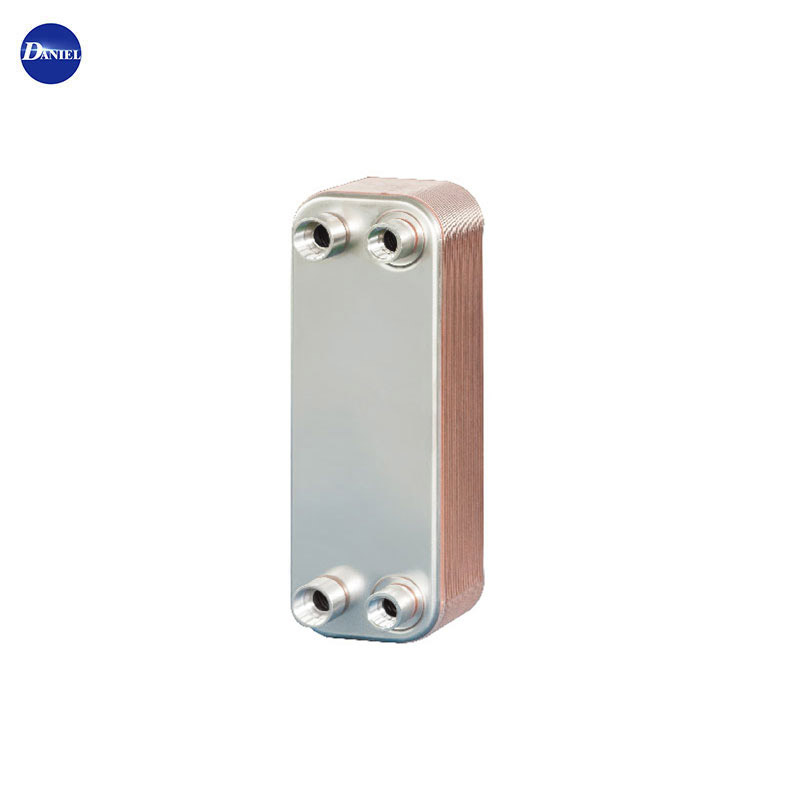Understanding the Maintenance Requirements and Lifespan of a SWEP Brazed Plate Heat Exchanger
2024-07-03
The SWEP Brazed Plate Heat Exchanger (BPHE) is renowned for its efficiency, compact design, and durability. However, like any piece of equipment, it requires proper maintenance to ensure optimal performance and longevity. In this blog, we will delve into the maintenance requirements of the SWEP BPHE and explore factors that influence its lifespan.
Maintenance Requirements of the SWEP Brazed Plate Heat Exchanger
1. Regular Inspection and Cleaning
Routine inspections are essential for maintaining the efficiency of a SWEP Brazed Plate Heat Exchanger. Regular visual checks for signs of wear, corrosion, or damage can help identify issues early. Cleaning the heat exchanger is also crucial, as fouling from impurities in the fluids can significantly reduce thermal performance. Depending on the application and fluid quality, the BPHE may require periodic cleaning using chemical cleaners or mechanical methods like backflushing.
2. Monitoring Performance
Keeping an eye on the performance metrics of the BPHE is another important aspect of maintenance. Monitoring parameters such as pressure drop, temperature differential, and heat transfer efficiency can help detect potential problems. Sudden changes in these metrics often indicate fouling, clogging, or other issues that need attention.
3. Ensuring Proper Fluid Quality
The quality of the fluids used in the SWEP Brazed Plate Heat Exchanger can greatly impact its performance and lifespan. Using clean, filtered fluids minimizes the risk of fouling and corrosion. Additionally, ensuring that the fluids are compatible with the materials of the BPHE helps prevent chemical reactions that could lead to damage.
4. Checking for Leaks
Although the brazing process creates a robust and leak-proof seal, it’s important to regularly check for leaks, especially if the BPHE is subjected to high pressures or aggressive fluids. Early detection of leaks can prevent more significant issues and reduce downtime for repairs.
5. Replacing Worn Components
Over time, some components of the SWEP Brazed Plate Heat Exchanger may experience wear and tear. Gaskets, seals, and other parts that are subject to regular stress should be inspected and replaced as necessary to maintain the integrity of the system.
Lifespan of the SWEP Brazed Plate Heat Exchanger
The lifespan of a SWEP Brazed Plate Heat Exchanger can vary depending on several factors, including the operating conditions, maintenance practices, and the quality of fluids used. Generally, a well-maintained BPHE can last for 10 to 20 years or more. Here are some key factors that influence its lifespan:
1. Operating Conditions
The conditions under which the BPHE operates play a significant role in its longevity. Exposure to extreme temperatures, high pressures, and aggressive fluids can accelerate wear and reduce the lifespan of the heat exchanger. Ensuring that the BPHE operates within its specified limits helps extend its service life.
2. Maintenance Practices
Regular and proactive maintenance is crucial for maximizing the lifespan of the SWEP Brazed Plate Heat Exchanger. Following the recommended maintenance schedule, conducting inspections, and addressing issues promptly can prevent premature failure and ensure long-term reliability.
3. Fluid Quality
As mentioned earlier, the quality of the fluids used in the BPHE significantly impacts its lifespan. Clean, compatible fluids help minimize fouling, corrosion, and other issues that can shorten the heat exchanger’s service life. Implementing proper filtration and treatment processes for the fluids can enhance the longevity of the BPHE.
4. Material Selection
The materials used in the construction of the SWEP Brazed Plate Heat Exchanger are chosen for their durability and resistance to corrosion and wear. However, selecting the right materials based on the specific application and fluid characteristics is crucial for ensuring long-term performance and reliability.
Conclusion
The SWEP Brazed Plate Heat Exchanger is a robust and efficient solution for a variety of thermal management applications. By following proper maintenance practices, monitoring performance, and ensuring the use of high-quality fluids, you can maximize the lifespan of your BPHE. Understanding these maintenance requirements and factors influencing its lifespan will help you achieve optimal performance and reliability, ensuring that your heat exchanger serves you well for many years to come.



